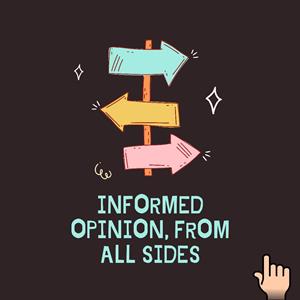Explained: Why a new wave of executions in Saudi Arabia has inflamed tensions with regional rival Iran
Saudi Arabia recently executed 81 people, including seven Yemenis and one Syrian national, prompting the Iranian government to suspend talks with the country. A look at tensions and diplomatic relations between Saudi Arabia and Iran.
 The Saudi flag. The country is among the nations that carry out the highest numbers of executions in the world.
The Saudi flag. The country is among the nations that carry out the highest numbers of executions in the world.In what is being called the biggest mass execution in Saudi Arabia’s history, the Middle-Eastern state recently executed 81 people, which included those convicted of murders, members of al-Qaeda and the Islamic State. Out of those executed, there were seven Yemenis, one Syrian national and the remaining were Saudi Arabian nationals.
A day after these executions, the Iranian government, Saudi Arabia’s rival in the Middle-East, suspended talks with Saudi Arabia. This development was reported on Sunday by Nour News, a news organisation close to Iran’s Supreme National Security Council.
In a short update, the news website said that Iran has unilaterally decided to suspend talks with Saudi Arabia for some time. The fifth round of talks between the two rivals was scheduled to be held in Baghdad (the capital of Iraq, which is one among the seven countries that are called the Gulf States, Saudi Arabia is also one of them). The report did not mention the reason for suspension.
Who were the 81 executed by Saudi Arabia?
Saudi Arabia is among the nations that carry out the highest numbers of executions in the world, along with China, Iraq, Vietnam and Iran.
 According to the British non-profit Reprieve, Saudi Arabia has carried out more than 800 executions so far. In 2019, 184 executions were carried out in the country.
According to the British non-profit Reprieve, Saudi Arabia has carried out more than 800 executions so far. In 2019, 184 executions were carried out in the country.
Rights organisations have repeatedly criticised Saudi Arabia for its record on human rights, repressing freedom of expression, association and assembly, and cracking down on dissent.
About the recent 81 executions, the Saudi Press Agency (SPA) said that all the sentences involved those convicted under charges of terrorism and capital crimes. The press agency also said that the individuals were convicted of crimes including murdering innocent men, women and children, and pledging allegiance to foreign terrorist organisations including ISIS, al-Qaeda and the Houthis.
Other than this, the convictions include crimes of kidnapping, torture, rape, smuggling arms and bombs into Saudi Arabia. “The Kingdom will continue to take a strict and unwavering stance against terrorism and extremist ideologies that threaten the stability of the entire world,” SPA said.
The Shia-Sunni divide
Relations between Saudi Arabia and Iran have been sour in part because of religious differences, which go back centuries. Iran has a majority of Shia Muslims, whereas Saudi Arabia has more Sunni Muslims, who are the majority in the world too.
These religious differences also play out in the rest of the Middle East, where some countries depending on their populations of Sunni and Shia Muslims look up to either Saudi Arabia or Iran.
According to the Council on Foreign Relations (CFR), many of the groups that are responsible for sectarian violence in the region and the Muslim world since 1979 can be traced to the tensions between Saudi Arabia and Iran.
Tensions and diplomatic relations between Saudi Arabia and Iran
Tensions between the two countries go back at least four decades, when the de facto leader of the Muslim world – Saudi Arabia – had to face the possibility of another leader competing for the same position.
In 1979, during the Iranian revolution, the Saudi Arabian monarchy felt threatened by the creation of the Islamic Republic of Iran. Up until then, Saudi Arabia–the birthplace of Islam where Mecca (birthplace of Prophet Muhammad) and Medina (the place where he is buried) are located – considered itself to be the leader of the Muslim world. But with the revolution in Iran, an alternative type of state was created.
This was followed by Iraq’s invasion of Iran, leading to the Iran-Iraq war. At this time, Saudi Arabia supported Iraq, worsening relations with Iran. In 2003, when the US invasion of Iraq (a Shia majority country) removed Saddam Hussein, a member of the Sunni minority, it gave an opportunity for the Shia majority to occupy space in the country’s parliament.
The so-called ‘Arab Springs’, which were triggered by a Tunisian fruit-seller who set himself on fire after facing harassment by officials in December 2010 and which led to pro-democracy revolutions in the rest of Middle East, was still about eight years away from this point.
But in 2003, the fall of the Saddam Hussein regime in Iraq, exacerbated the feelings of rivalry between Saudi Arabia and Iran. This sentiment played out elsewhere in the Middle East. For instance, Iran favoured the rule of Bashar Al-Assad over the Sunni majority nation of Syria, while Saudi Arabia supported protests against his dictatorship. Similarly, Iran supported pro-democracy protests in Shia-majority Bahrain in 2011, whereas Saudi Arabia sent its troops to help the regime of King Hamad to quell them.
The final blow to diplomatic relations between the two countries came in 2016, when Saudi Arabia severed relations with Iran. At the time, when Saudi Arabia executed Shiite cleric Nimr al Nimr along with some other prisoners, the Saudi Arabian embassy was attacked in Tehran, which prompted Saudi Arabia to suspend diplomatic relations.
Newsletter | Click to get the day’s best explainers in your inbox
- 01
- 02
- 03
- 04
- 05






































